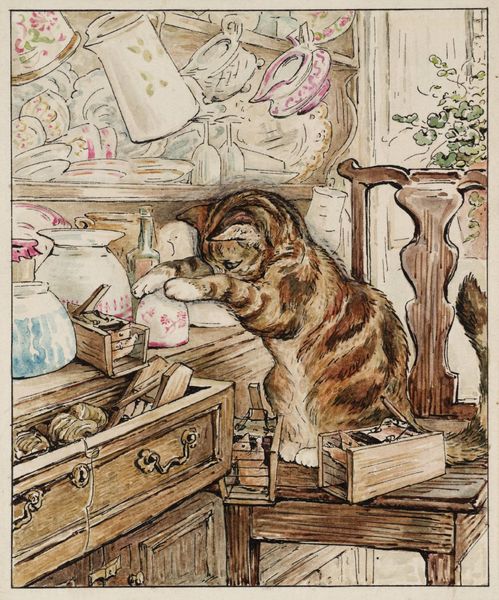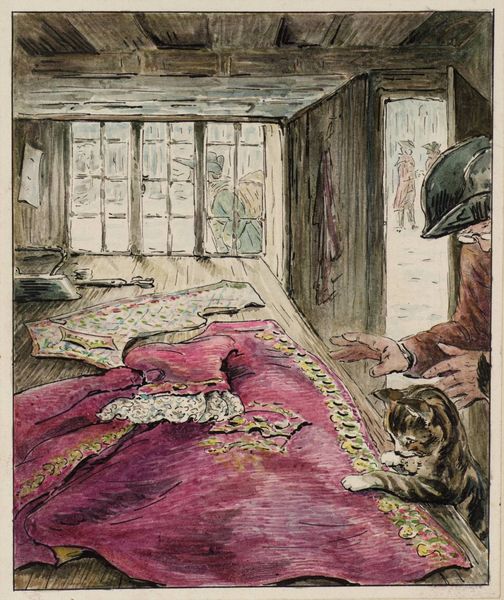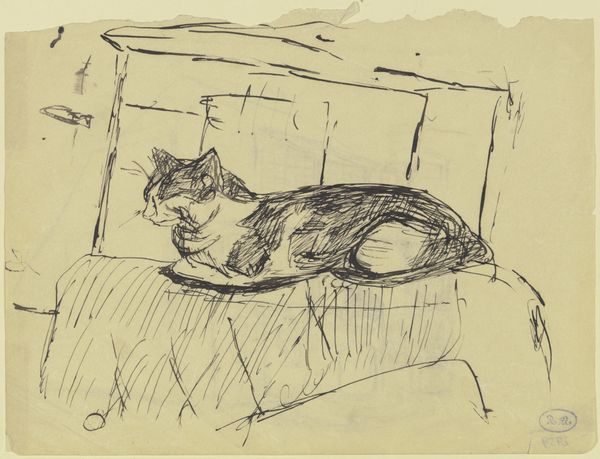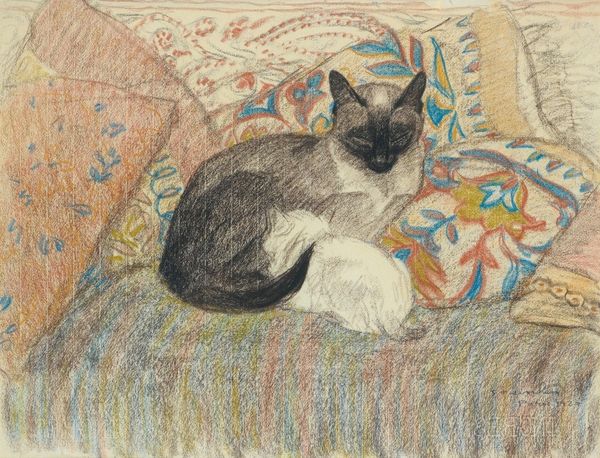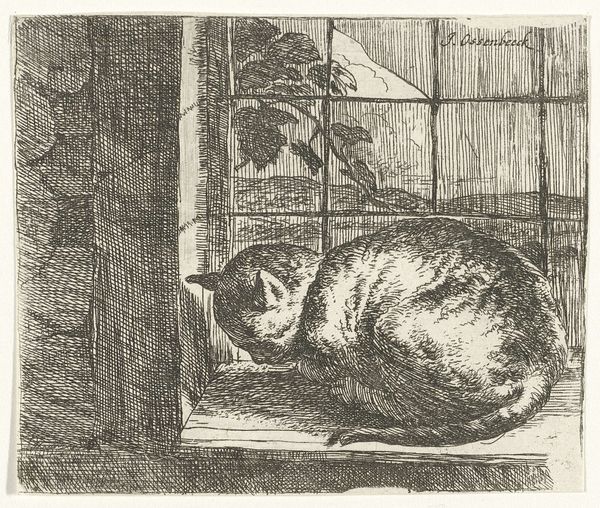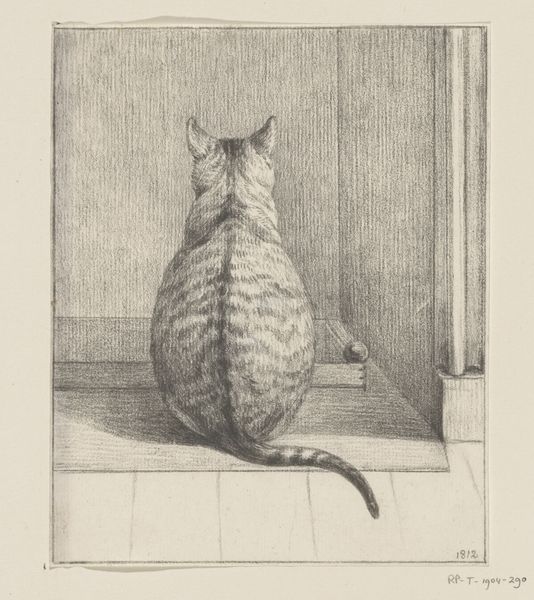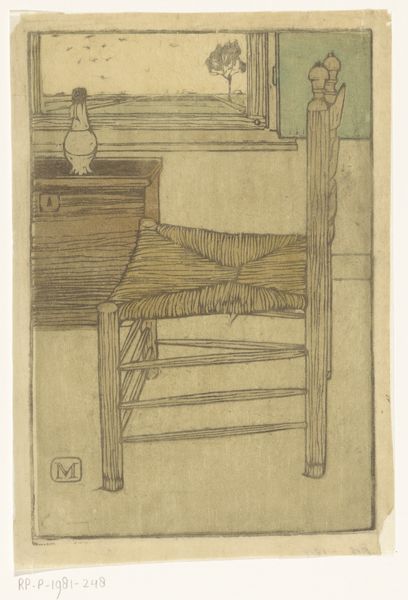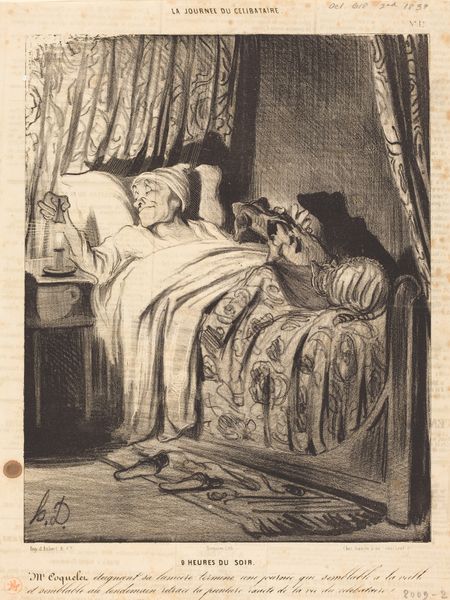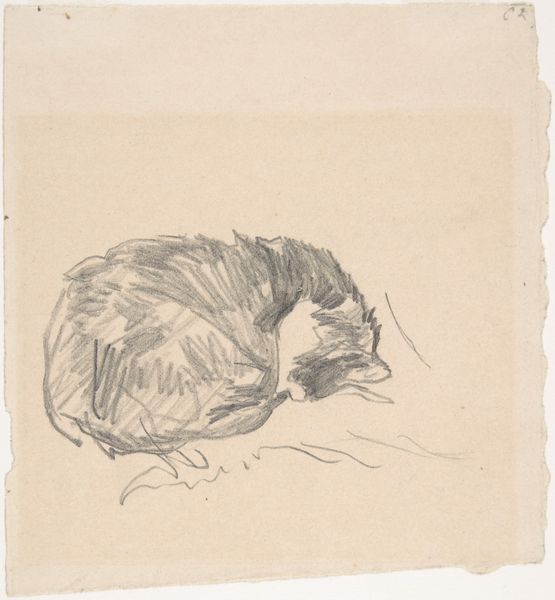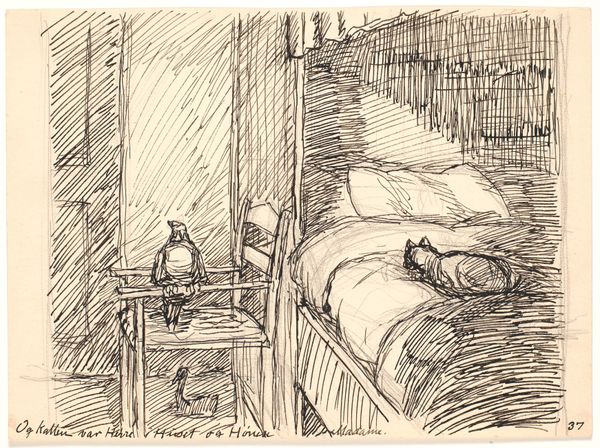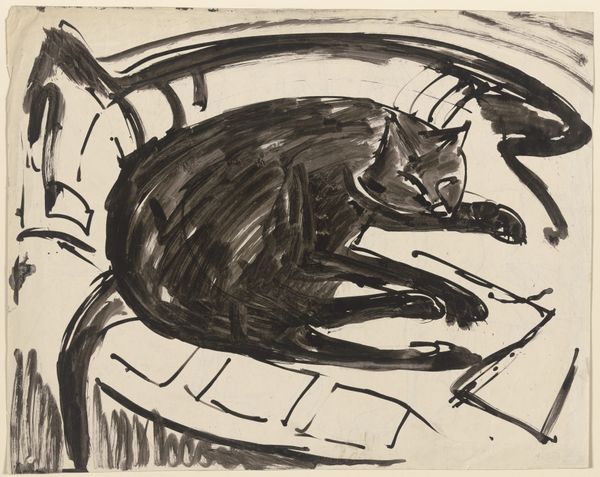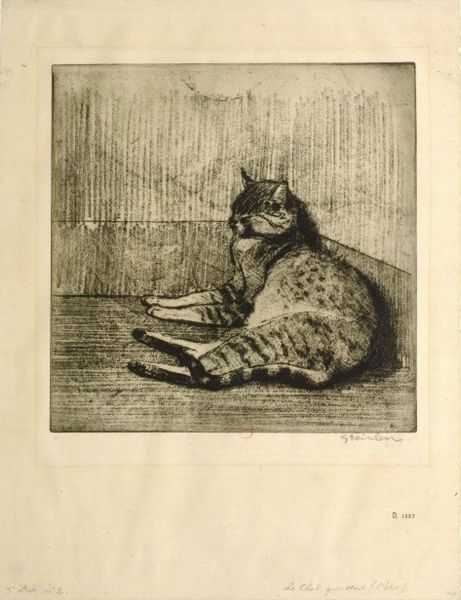
coloured-pencil, watercolor
#
toned paper
#
coloured-pencil
#
animal
#
arts-&-crafts-movement
#
figuration
#
watercolor
#
coloured pencil
#
watercolour illustration
#
genre-painting
#
watercolor
Copyright: Public domain
Editor: This is "Simpkin at the Tailor’s Bedside," a watercolour and colored pencil work from 1902 by Beatrix Potter. It’s such a charming, intimate scene with a touch of humour. What's your perspective on it? Curator: Notice first the materials: watercolour and colored pencil on toned paper. These accessible materials immediately flatten any traditional hierarchy that separates 'high art' from more humble methods. Look at the process: Potter uses a layering technique that speaks to both her artistic and scientific eye – she was a dedicated naturalist. Editor: I hadn’t considered her scientific side influencing the art so directly. Curator: It certainly does. But also, consider this was during the Arts and Crafts movement, an era of championing handcraft over mass production. Potter herself oversaw the production of her books, controlling their material qualities to ensure they were affordable. So this depiction of a domestic scene featuring a cat performing labour can be understood as a comment on the value of skilled work versus the realities of production. The carefully rendered textures of the cat’s fur alongside the crisp precision of the tailor's bed linens elevates craft. What do you make of that contrast? Editor: I suppose it suggests that Potter valued attention to detail regardless of whether she was drawing an animal or drawing textiles. Perhaps all labor deserves respect? Curator: Exactly! And through that, she subverts those traditional art hierarchies. The subject isn’t royalty or classical mythology; it’s a humble tailor and his cat, rendered with immense care using 'common' materials, reflecting a subtle challenge to artistic conventions by celebrating the dignity found in everyday scenes and processes. Editor: This has really changed my perspective. I now see that this drawing engages in social commentary through the way it has been made! Curator: Indeed, it demonstrates how materials and the act of creation can challenge prevailing ideas about artistic value and labour.
Comments
No comments
Be the first to comment and join the conversation on the ultimate creative platform.
